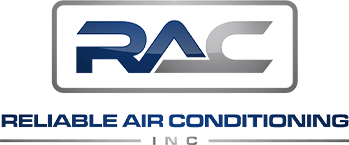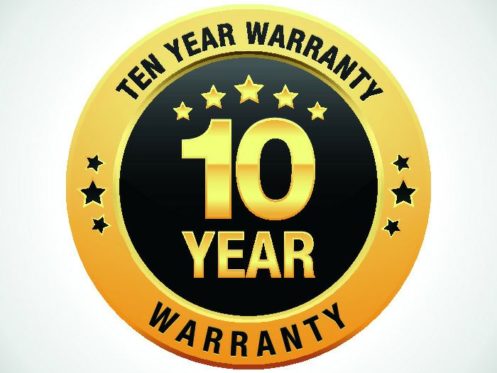Your HVAC system can be expensive to acquire and maintain. Most brands of equipment will have warranties with varying terms on labor and parts coverage. Your service provider may also have guarantees and coverage for the service. However, it is possible to void your warrant unintentionally, incurring unnecessary costs in the process. Here are some of the common mistakes that can void the warranty.
Failing to Register the Warranty
After installing your HVAC unit, the contract requires you to register for a full warranty. You must complete the registration before the agreement becomes active. Typically, you have between 60 and 90 days from the date of installation to meet this requirement.
Sometimes, your installation service team can do the registration for you. The service provider may also include their labor warranty, which is absent in your HVAC system contract. But you should double-check the registration, even if an HVAC system professional does it for you. You can verify your details and the terms of the contract on the manufacturer’s portal. The information at registration typically includes the homeowner’s location and address. It also has the model and the serial number of the indoor and outdoor units.
Failing to register on time and with accurate information can void the warranty. Some manufacturers may allow you to fill out the form after the deadline. Usually, though, it comes with limitations on the parts or the duration of the contract.
For example, if you do not register within 60 days, the manufacturer can shorten a 10-year warranty to five years. However, most brands have online platforms where you can conveniently complete the registration online.
Improper Installations and Substandard Repairs
The installation of your HVAC unit is a complicated process with many challenges. When installing a new air conditioning system, the service provider must observe the manufacturer’s rules and local regulations. Parts of the system must also match according to industry standards as stipulated in the contract.
So, it is essential that the professional carrying out the installation is a certified expert. The registration form will require you to indicate the service provider performing the installation. You may void the warranty if the technician is unqualified to complete the task.
Technicians without the proper training may fail to perform quality servicing or component replacements. Substandard repairs can lead to additional labor and parts replacement expenses in the future. When you need quality services you can trust, consult Reliable Air Conditioning‘s staff in Gilbert.
Using Third-Party Replacement Parts
Different manufacturers will tend to have varying policies when it comes to your equipment’s warranty. Most warranties do not include off-label or third-party replacement parts. The contract may require the components to be OEM (Original Equipment Manufacturer) rather than an aftermarket replacement.
The manufacturer can provide guarantees for OEM parts because they can verify their performance. Third-party components are more affordable. But you have to consider the cost of labor and replacement when you void the warranty.
Manufacturers also have varying terms on the components they cover. Some parts, such as the compressor, are prone to developing problems during installation. It is also expensive to replace it. As such, manufacturers have different terms for compressor warranties.
It is crucial to carefully examine the warranty to determine if it covers other components such as the heat exchanger. Heat exchangers have to cope with extreme and fluctuating temperatures, which increases their likelihood of failure. Some brands like Lennox offer a 20-year warranty for such parts.
There are also components in your HVAC system that manufacturers may consider to be maintenance items. An example of a maintenance item is a filter that you have to replace regularly. The manufacturer does not cover filters and other items such as the capacitor or contactors.
Whether the warranty considers those components to be maintenance items depends on the terms. The kind of damage on your system may determine if the manufacturer will include repairs. Any damage outside of the normal function of the HVAC system is usually not covered. That includes storms, fires, and electrical surges.
Skipping Routine Maintenance
Manufacturers can void your warranty if you skip your routine maintenance schedule. Ideally, you should arrange for an HVAC system tune-up once a year, but that depends on the system. The terms of the warranty may also require a trained and certified technician to perform installation and repairs.
Most brands understand the value of routine maintenance for both the consumer and the manufacturer. The process can find malfunctions that could deteriorate parts of the system and cause a malfunction.
Maintenance also involves cleaning components and tightening loose sections. Such tasks prevent premature failure of electronic and mechanical parts of the system.
Manufacturers also appreciate that trained technicians are more effective at addressing faults in the parts. They can replace components without posing a health risk. After the maintenance process is complete, you can have peace of mind knowing it does not violate local code.
Not Keeping HVAC Service Records
After maintenance or installation, you should keep the documentation as proof of the service. Before committing to the agreement, read the terms and understand the implications. Find out whether it covers burners, compressors, and ignitors.
Your warranty will indicate the start date of the coverage, which is critical when you want to fix or repair the system. Some agreements may not cover the HVAC system if there has been a change of ownership.
If you’ve just moved into the property, you should keep a receipt of the date of your move. Otherwise, the agreement could begin at an earlier date, shortening the term of the warranty considerably.
Since the warranty incorporates industry standards and local regulations, the terms may depend on your location. So, you should check if the terms of the agreement apply to your state.
Many brands will pay for components damaged during the installation process, but the technician must be a certified and licensed professional. Also, most warranties will not include labor expenses to replace the part.
However, your service provider may offer a labor warranty for replacements or installation. The agreement signifies that the technician can stand behind their work. On average, labor warranties may last for one year, after which you’ll cover the cost.
The value of labor warranties depends on the type of component that requires a replacement. For smaller parts, labor can account for up to 90% of expenses. For larger ones, the costs are about 50%.
Nonetheless, you should keep receipts and installation documentation and observe annual maintenance. In such cases, you won’t have to worry about voiding your warranty. You will also ensure that your system is running efficiently throughout the season.
Having to deal with multiple repairs can be expensive and frustrating. During the annual maintenance, a technician can provide insights that could protect your warranty. For example, they can warn you of accessories that conflict with the manufacturer’s terms.
When you need dependable installation and repair solutions, Reliable Air Conditioning is your go-to service in Gilbert. As a locally-owned and operated company, we offer a comprehensive suite of heating, cooling, and indoor air quality services. Thanks to our commitment to excellence, our team has been screened and approved by HomeAdvisor. We offer a 100% guarantee on the service we provide. Book an appointment today and get a free estimate.



